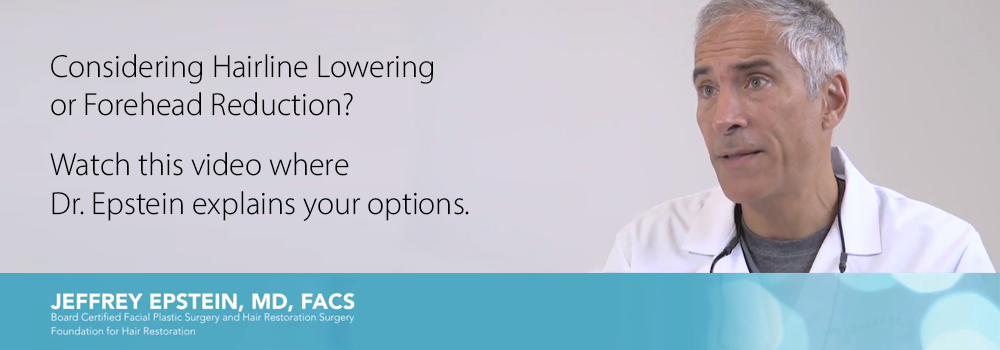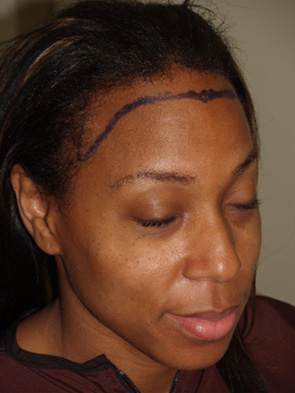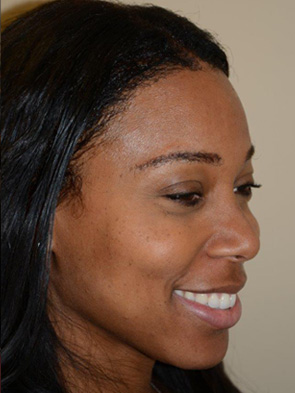
The hairline advancement/lowering procedure can lower the overly high hairline whether due to genetics, hair loss, or prior surgery such as browlifts. Most commonly it is performed on women, where the high forehead can be shortened. In addition, it is possible to actually change the shape of the hairline, making it more oval or rounded by filling in the upper temporal/side regions, creating a more feminine appearance. This is a procedure in which Dr. Epstein, other Women’s Center for Hair Loss surgeons specialize. They perform this procedure worldwide on an average 2 to 3 times weekly.
Hairline Advancement Techniques
There are two techniques that can be used to advance the hairline. The most common, because it has many advantages, is with hair transplants. In this technique, as many as 2,800 or more hair grafts can be placed in a single procedure with natural appearing results. Performed usually under a mild oral sedative, this 4 to 6 hour long procedure is essentially painless, as is the recovery period. These grafts, each containing 1 to 3 hairs, are each placed in the natural direction of growth, into very tiny incisions both in front of as well as between the existing hairline hairs in order to increase density. Most patients are fully presentable by 4 to 7 days, and allowed to resume normal activities, including exercise and hair washing, at 5 days. The transplanted hairs fall out after 3 weeks, then start to regrow at 3 months- requiring a total of 6 or so months before the results are quite noticeable. The hairs can grow not only in areas that once had hair, but also in areas where hair never grew. The donor hairs come from the back of the scalp, which continue to grow for a lifetime. To provide a natural appearance, the hairs are transplanted primarily one and occasionally two at a time, with the finest hairs up front, the natural way the hairline hairs grow. There are few risks with the procedure. The donor site, from where the hairs are removed, typically heals as a less than 2 mm wide incision, easily concealable with existing hair in the area.

Before

Demonstration of the anticipated amount of lowering

Marking out

Actual result at one week
The other hairline advancement technique is a surgical procedure that involves shortening the forehead while surgically moving the hairline forward. An incision is made right along the front of the hairline, and sometimes along with shortening the forehead, the eyebrows can be raised up, if desired, so that a browlift is performed. The result is a fine line incision scar along the hairline which typically heals up to be barely if at all visible, plus is typically designed by our team to have hairs growing through it. This is definitely a bigger procedure than transplanting with hair grafts, but can be quite effective and produce rapid results. Most patients are presentable at 5 to 7 days, and the sutures come out at around a week.
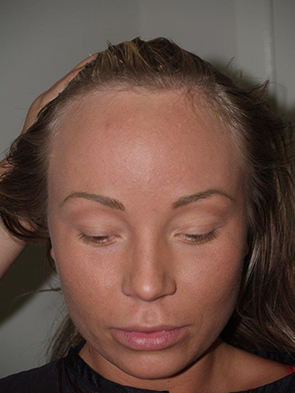 Before
Before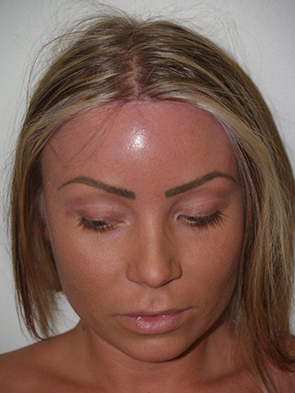 After
After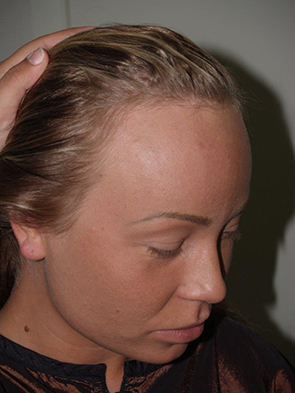 Before
Before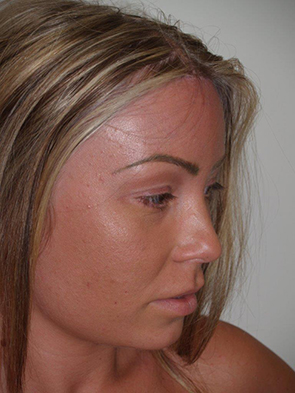 After
After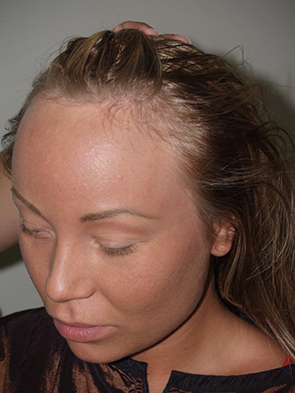 Before
Before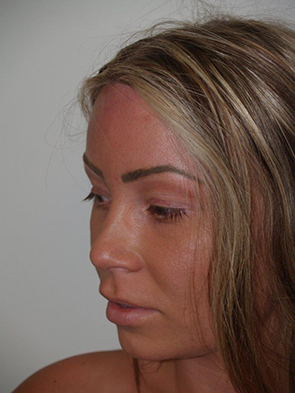 After
AfterGrafting or hairline lowering surgery- which is a better option for me? Dr. Epstein presents a case for performing the surgery on a patient.
Candidates for Hairline Lowering Procedure
In order for the surgical advancement procedure to be successful, the patient needs at least a moderate amount of flexibility of the scalp along the frontal region. This can be tested by placing your index finger right along the middle of the hairline, then seeing how high up and down it can be moved. Being able to move the finger a total of an inch or so is generally what is needed to lower the hairline enough. If the scalp is not loose enough, the occasional patient may choose to undergo what is called tissue expansion. With this technique, a balloon tissue expander is surgically placed under the front three inches or so of the scalp, then over an 8 to 10 week period, the balloon is gradually inflated with saline. As it does so, it stretches out the scalp and allows for much more hairline advancement/lowering, as much as 2 inches if desired. Both of these procedures are typically performed in the office operating room under either an oral sedative or deeper intravenous sedation, the choice being up to the patient in consultation with one of our doctors, who have extensive experience with these procedures. As you can well imagine, most patients are not interested in having this expander.
In fact, for most patients, hair grafting is the procedure of choice. It avoids the need for making an incision along the hairline, and is a much less involved surgical procedure. Another advantage of hair grafting is that our surgeons are able to achieve better rounding out of the hairline, especially filling in and lowering the sides. The main advantage of the surgical advancement procedure, however, is that there is an immediate result with unsurpassed density in just a single procedure. In addition, in as soon as 2 months later, a hair grafting procedure can be performed to round out the hairline as well as to conceal any possibly fine line scars that can result.
Contact the Women’s Center for Hair Loss to discuss your best options for hair restoration.
